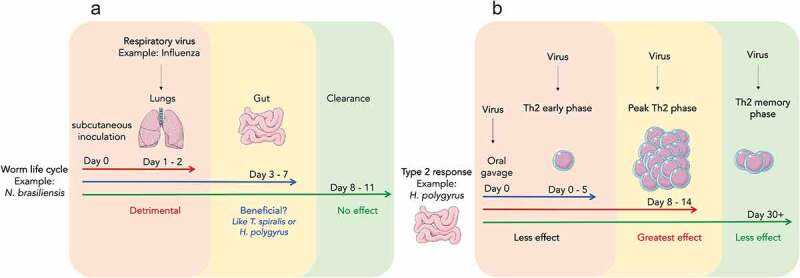Figure 2.

Timing of viral infection with respect to the life cycle stage of the helminth affects coinfection outcome. (a) Infection with influenza virus when N. brasiliensis is in the lungs (day 1–2) has a detrimental outcome, whereas infection with influenza at day 14, when N. brasiliensis has been cleared, has no effect on the host. As seen with other enteric helminths such as T. spiralis and H. polygyrus, whether infection of influenza virus during the enteric phase of N. brasiliensis has a beneficial effect is unknown. (b) Type 2 immune responses to the enteric helminth H. polygyrus peak after one week of infection, plateau, and then decline as worm burden reduces. During the peak phase, type 2 immune cells and cytokines are elevated, which can antagonize antiviral responses if virus infects during this phase. However, when virus infection occurs earlier or later, when type 2 responses are still developing or have waned, the effect on antiviral responses might be moderate, little, or none
